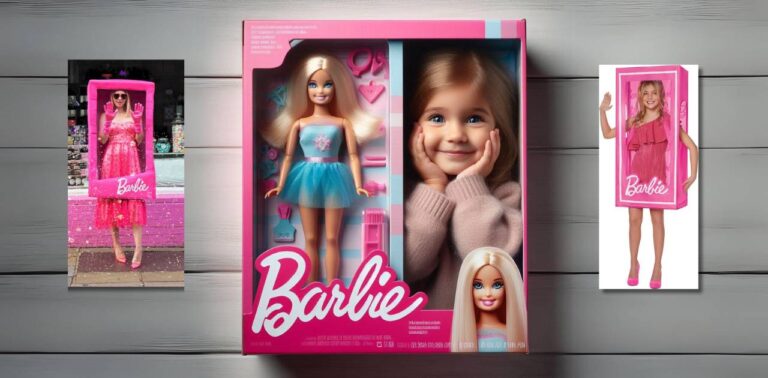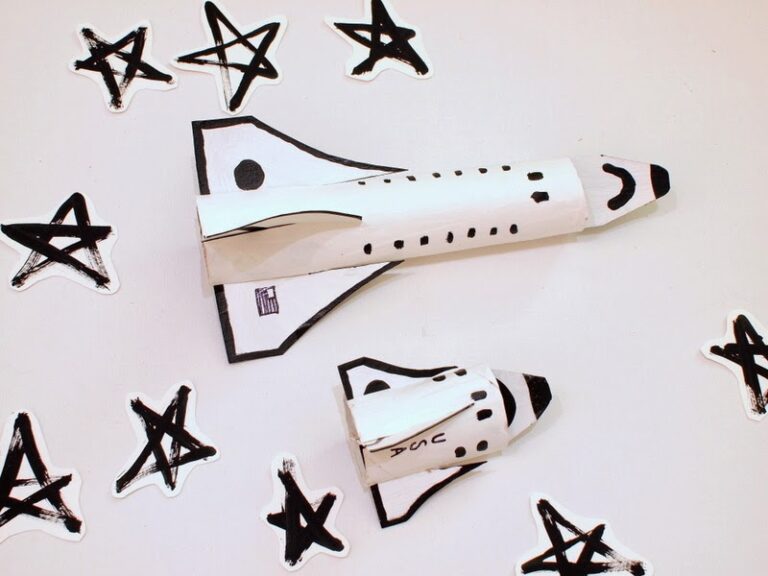Anúncios
Encouraging children to develop curiosity and creativity from an early age is one of the most effective ways to promote environmental awareness. And this can be done in a fun and educational way! Creating toys from recycled materials is a great way to teach children the value of sustainability while having fun. A practical and exciting example is to build a toy castle using materials that would otherwise be thrown away.
By transforming items such as cardboard boxes and plastic bottles into toys, we not only reduce waste, but also encourage children to be environmentally responsible. In addition, the activity of building toys involves motor skills, planning and creativity, providing valuable learning for children.

Materials Needed to Build a Toy Castle
Making a toy castle is easier than it seems. Most of the materials you need can be found around the house, such as cardboard boxes and plastic bottles. These items, which would normally be thrown away, can be turned into a fun and personalized toy. You will need a large cardboard box, four 2-liter plastic bottles, an empty roll of aluminum foil, four yogurt containers, popsicle sticks, string, glue, scissors, a pen and tape.
With these items, you can build a creative and eco-friendly castle. Using recyclable materials teaches children that with a little imagination, it is possible to create amazing toys without spending a lot and without harming the environment. In addition, this activity provides a great opportunity for parents to interact with their children, working together on a fun and educational project.
Step by Step Guide to Assembling the Toy Castle
The first step is to draw four circles on the corners of the cardboard box, measuring the diameter of the PET bottles. These circles will serve as supports for the castle towers. Then, cut off three of the four flaps of the box, leaving only one, which will be used as part of the castle door.
For the door, cut a smaller rectangle out of the remaining flap and decorate it with popsicle sticks and string, which will imitate the opening and closing mechanism. The towers are made with the PET bottles fitted into the cut-out circles, while the aluminum foil roll cut in half is glued to the sides of the box, forming smaller towers.
Once the basic structure of the castle is complete, you can glue yogurt pots between the bottles to add more detail to the castle. Finish by gluing popsicle sticks to the areas you want to decorate.
Customizing the Toy Castle
One of the most fun aspects of building a toy castle with kids is the ability to customize it. After the basic assembly is complete, encourage kids to decorate the castle however they want. They can glue on designs, paint the towers, and create flags to decorate the top of the castle.
If you want to reuse more materials, old magazines can be cut up to make collages for the castle. This is also an opportunity to include additional learning elements, such as identifying colors, shapes, and even historical or fantasy themes that children love.
In addition to being a creative activity, this personalization helps to reinforce the idea that materials that would otherwise be discarded can have a new purpose, extending their useful life cycle and reducing the amount of waste.
Sustainability and Fun with the Toy Castle
The toy castle project has a strong environmental appeal. It shows, in a practical way, that toys can be built at home, promoting the reuse of disposable materials. In addition to being fun and educational, this type of activity also teaches children important lessons about recycling and respecting the environment.
When a toy loses its charm or is no longer used, remember that it can be disassembled and its materials sent for recycling. This closes the sustainable cycle and teaches children the responsibility of properly disposing of objects that are no longer needed.
Benefits of Building Reusable Toys
Building reusable toys, such as a toy castle, brings numerous benefits to children's development and the environment. First, this activity involves creative thinking and planning, important skills for children's growth. In addition, the construction process is an opportunity for interaction between parents and children, strengthening bonds and providing quality time.
From an environmental perspective, using recyclable materials prevents waste and promotes awareness from an early age. By learning to reuse materials such as cardboard and plastic bottles, children become more aware of the impact of consumption and the importance of recycling.
Encouraging Creativity Beyond the Toy Castle
Building a toy castle is just the beginning. With the same materials, you can create countless other toys and projects. For example, leftover cardboard can be turned into shields and swords to complement the castle, or even into cars and dolls.
The important thing is to encourage children to use their creativity and explore new ideas. Each piece of material can be an opportunity for a new game. And, of course, the whole process reinforces the concept of sustainability, showing that fun and environmental preservation can go hand in hand.
Final Considerations
Building a toy castle with reusable materials is an activity that goes beyond play. It involves learning, creativity, family interaction and, above all, promotes environmental awareness in a playful way. By reusing items that would normally be discarded, you not only help reduce environmental impact, but you also teach children the value of caring for the planet.
Whether for an afternoon of fun or as part of a school project, creating a toy castle is an activity that combines learning and entertainment. And who knows? This simple castle could be the starting point for many other creative and sustainable adventures, and transform something ordinary into a unique and personalized toy for children.
Step by Step Guide to Assembling the Toy Castle
The first step is to draw four circles on the corners of the cardboard box, measuring the diameter of the PET bottles. These circles will serve as supports for the castle towers. Then, cut off three of the four flaps of the box, leaving only one, which will be used as part of the castle door.
For the door, cut a smaller rectangle out of the remaining flap and decorate it with popsicle sticks and string, which will imitate the opening and closing mechanism. The towers are made with the PET bottles fitted into the cut-out circles, while the aluminum foil roll cut in half is glued to the sides of the box, forming smaller towers.
Once the basic structure of the castle is complete, you can glue yogurt pots between the bottles to add more detail to the castle. Finish by gluing popsicle sticks to the areas you want to decorate.
Customizing the Toy Castle
One of the most fun aspects of building a toy castle with kids is the ability to customize it. After the basic assembly is complete, encourage kids to decorate the castle however they want. They can glue on designs, paint the towers, and create flags to decorate the top of the castle.
If you want to reuse more materials, old magazines can be cut up to make collages for the castle. This is also an opportunity to include additional learning elements, such as identifying colors, shapes, and even historical or fantasy themes that children love.
In addition to being a creative activity, this personalization helps to reinforce the idea that materials that would otherwise be discarded can have a new purpose, extending their useful life cycle and reducing the amount of waste.
Sustainability and Fun with the Toy Castle
The toy castle project has a strong environmental appeal. It shows, in a practical way, that toys can be built at home, promoting the reuse of disposable materials. In addition to being fun and educational, this type of activity also teaches children important lessons about recycling and respecting the environment.
When a toy loses its charm or is no longer used, remember that it can be disassembled and its materials sent for recycling. This closes the sustainable cycle and teaches children the responsibility of properly disposing of objects that are no longer needed.
Benefits of Building Reusable Toys
Building reusable toys, such as a toy castle, brings numerous benefits to children's development and the environment. First, this activity involves creative thinking and planning, important skills for children's growth. In addition, the construction process is an opportunity for interaction between parents and children, strengthening bonds and providing quality time.
From an environmental perspective, using recyclable materials prevents waste and promotes awareness from an early age. By learning to reuse materials such as cardboard and plastic bottles, children become more aware of the impact of consumption and the importance of recycling.
Encouraging Creativity Beyond the Toy Castle
Building a toy castle is just the beginning. With the same materials, you can create countless other toys and projects. For example, leftover cardboard can be turned into shields and swords to complement the castle, or even into cars and dolls.
The important thing is to encourage children to use their creativity and explore new ideas. Each piece of material can be an opportunity for a new game. And, of course, the whole process reinforces the concept of sustainability, showing that fun and environmental preservation can go hand in hand.
Final Considerations
Building a toy castle with reusable materials is an activity that goes beyond play. It involves learning, creativity, family interaction and, above all, promotes environmental awareness in a playful way. By reusing items that would normally be discarded, you not only help reduce environmental impact, but you also teach children the value of caring for the planet.
Whether for an afternoon of fun or as part of a school project, creating a toy castle is an activity that combines learning and entertainment. And who knows? This simple castle could be the starting point for many other creative and sustainable adventures.
Check out other interesting facts about recycling clicking here.
Learn how to make art by recycling, Click here.
Summary




